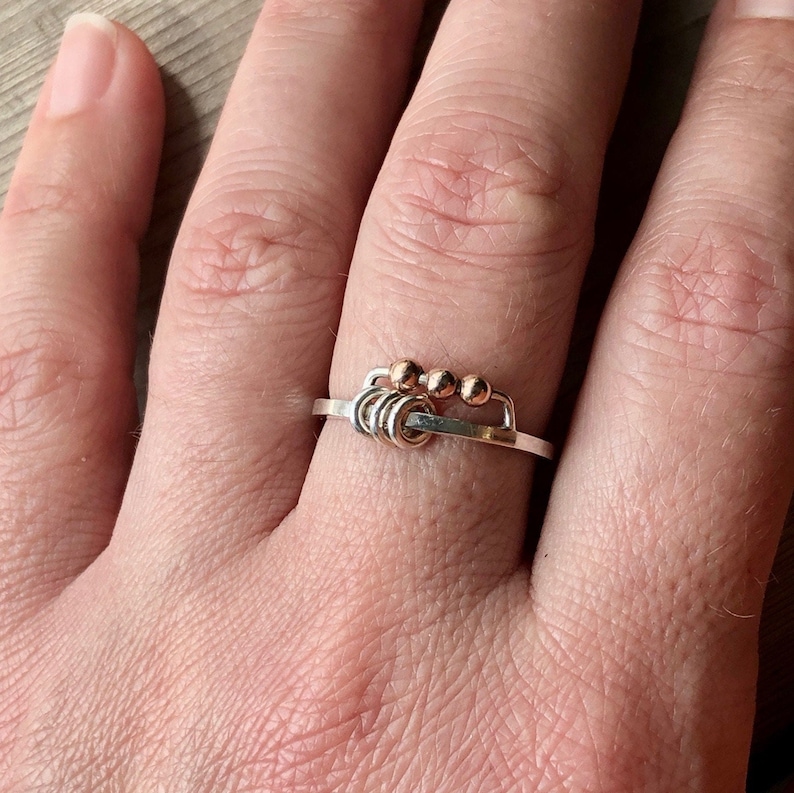

The brain may encounter your anxiety as a threat (whether actual or perceived) and release a surge of chemicals, like cortisol, the body’s primary stress hormone, and norepinephrine, the chemical responsible for reacting to stress and anxiety. Let’s say you have a big presentation coming up and you’re feeling anxious about it. This can be complex, so we will keep it simple. Some ring wearers swear that the distraction helps relieve some of the symptoms of anxiety, such as racing thoughts, sweating, fidgeting, and heart palpitations.īefore diving into whether anxiety rings actually work, we must address what happens in the brain when we’re feeling anxious. The idea is that the ring will help redirect your focus and calm your nerves when you’re feeling anxious. How people use these rings is subjective and depends on the right, but in most cases, people roll the beads or spin the band with their fingers. ( Image by Joyyjewelrystudio via Etsy Shop)

Some anxiety rings have gemstones, beads or crystals embedded in the band – there are even spinning rings that come with a built-in fidget spinner, and yes, they really spin! Anxiety rings are made of a variety of materials, such as stainless steel, titanium, and plastic. They come in various shapes and sizes, sharing the same common goals- to help you focus, de-stress, and provide you with a sense of calmness. This blog post will break down what anxiety rings are, if they actually work, the pros and cons, and if they’re worth your hard-earned dollar.Īn anxiety ring is quite literally what it sounds like, a piece of jewelry you wear on your finger. And while many of us can agree that these rings are beautiful and may enhance your personal style, we’re left asking ourselves if they can actually improve the quality of our mental health or are they just the latest fad on social media? Anxiety Rings (also referred to as worry rings or spinner rings) have been all the rage on social media lately, trending on TikTok, and since blowing up Instagram and Twitter.


 0 kommentar(er)
0 kommentar(er)
